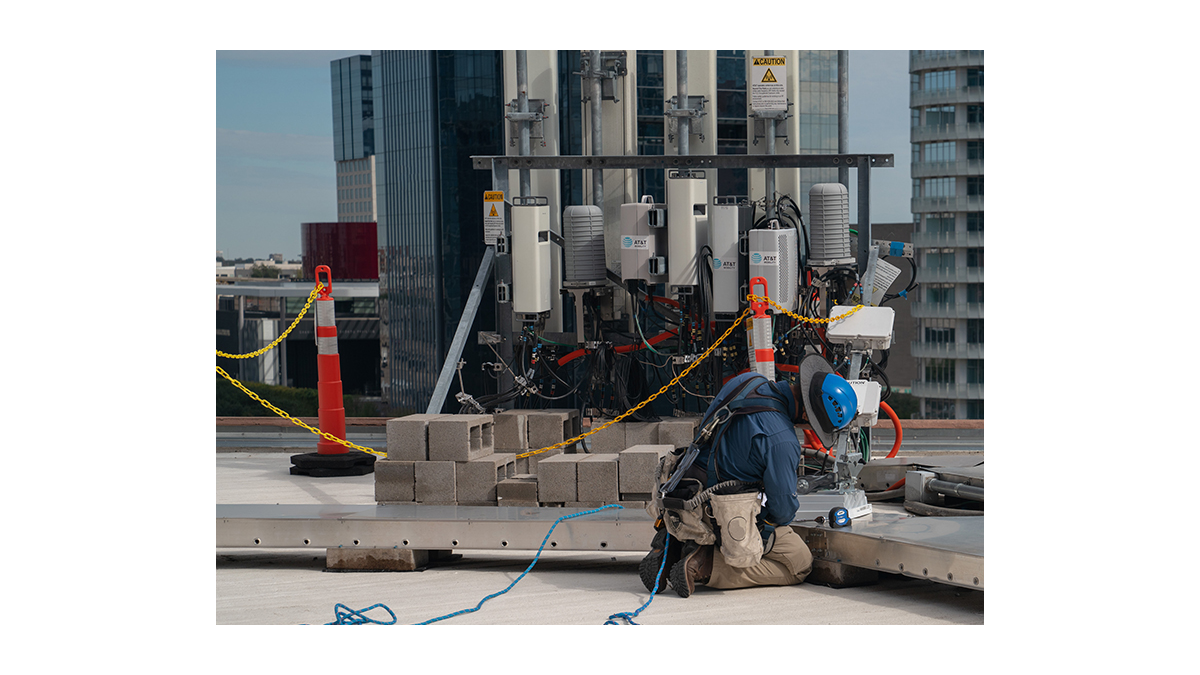Among those takeaways: AT&T's midband 5G buildout trails those of Verizon and T-Mobile. AT&T did not mention millimeter wave 5G. And AT&T remains uninterested in fixed wireless.

AT&T on Friday hosted a two-and-a-half hour online analyst and investor meeting where the company laid out its broad strategy to exit the media industry and double down on selling 5G and fiber connections.
During the event, the company offered some of its financial and business expectations for 2022 and 2023, and several company officials discussed exactly how AT&T plans to reach its goals.
Perhaps the primary element of AT&T's strategy involves shutting down its copper-based DSL network and building out fiber to roughly 30 million locations in the next few years. "Wherever fiber goes, wireless follows," boasted Jeff McElfresh, CEO, AT&T Communications.
That said, AT&T did offer some new insights into its maturing 5G strategy. Here are four 5G takeaways from AT&T's event:
1. AT&T's midband 5G buildout trails those of Verizon and T-Mobile.
AT&T execs said the company expects to cover 70 million people with midband 5G connections by the end of this year. By the end of 2023, AT&T said it would increase that number to 200 million people. AT&T said it expects to begin deploying 80MHz of midband spectrum starting this year, and would expand that to 120MHz by the end of 2023.
Figure 1:  An AT&T technician installs a 5G radio.
An AT&T technician installs a 5G radio.
(Source: AT&T)
AT&T spent a total of $36 billion across two recent FCC spectrum auctions to acquire its midband licenses. Midband spectrum is critical to 5G because it can support speedy connections alongside large geographic coverage areas. Further, the amount of midband spectrum that operators deploy is also key – more spectrum directly equates to faster speeds and additional network capacity.
AT&T said it's capital investments would total $24 billion in 2022, of which $5 billion would be for deploying 5G spectrum. The company said it expects to spend roughly the same in capital investments in 2023.
But it's now clear that AT&T's trails its rivals in the midband area. For example, Verizon recently said it expects to cover 175 million people with around 60MHz of midband spectrum by the end of this year. At the end of 2023, it expects to raise that to 160MHz of spectrum. By 2024, Verizon expects to cover 250 million people with midband 5G.
As for T-Mobile, the company already covers around 210 million people with 100MHz of midband spectrum, and expects to raise those figures to 300 million people and 200MHz by 2023.
2. AT&T did not mention millimeter wave 5G.
AT&T officials did not mention the highband, millimeter wave (mmWave) flavor of 5G once during its event.
However, that's not necessarily a surprise considering Apple recently released a new iPhone that does not support mmWave 5G at all. Separately, T-Mobile recently refreshed its view of the 5G spectrum "layer cake" to remove an emphasis on mmWave.
In the US, Verizon remains the only operator forcefully deploying mmWave. The company ended 2021 with around 30,000 mmWave transmission sites, and promised it would grow that number in the coming months and years.
"We see millimeter wave as a differentiator," Verizon CTO Kyle Malady said during his company's recent analyst day. He said around 30% of Verizon's customer base has a mmWave-capable device, and that around 10% of the carrier's network traffic now travels over mmWave in locations where it is available.
3. AT&T remains uninterested in FWA.
Although AT&T now commands roughly the same amount of lowband and midband spectrum as Verizon, the company still doesn't plan to embark on a major deployment of fixed wireless access (FWA) technology.
"We're not opposed to fixed wireless," AT&T CEO John Stankey said. Indeed, AT&T counts more than 500,000 fixed wireless customers, according to FierceWireless, of which around 130,000 are classified as business users.
"The curve is moving away from the scalability of wireless," Stankey said, explaining that the impressive rise in home broadband data traffic indicates that fiber, not wireless, can meet demand.
"I'm making the longer term bet," he said. "Nothing is going to top fiber."
That view contrasts with the strategies of both Verizon and T-Mobile. Verizon expects to record a total of 4 million to 5 million FWA customers by 2025; T-Mobile hopes to gain 7 million to 8 million FWA customers during roughly the same timeframe.
4. AT&T's IoT business remains interesting.
AT&T was an early mover in the Internet of Things (IoT) space, and the company continues to boast of traction in the market. Rasesh Patel, EVP and chief product and platform officer at AT&T, assigned a value of $1.3 billion to the company's IoT business, noting it's growing at 18% year-over-year. At the end of 2021, AT&T counted 95 million IoT devices on its network.
AT&T's IoT successes are clearest in the automotive sector. The company counts 50 million cars in the US on its network that, AT&T claims, represents an 80% share of the market.
And Patel said the auto industry is going through a "dramatic shift" to electric and autonomous vehicles, which he said would lead to a 40-fold increase in connectivity consumption among vehicles.
He said AT&T recently inked new, long-term connectivity agreements with GM, Ford, Nissian and Tesla.
Further, he said AT&T hopes to replicate the approach it took in the automotive industry – which included hiring a dedicated sales force – in other industry verticals, specifically manufacturing and healthcare. He said the company would do so through technologies that include edge computing and private wireless networking.
Related posts:
— Mike Dano, Editorial Director, 5G & Mobile Strategies, Light Reading | @mikeddano
About the Author(s)
You May Also Like











